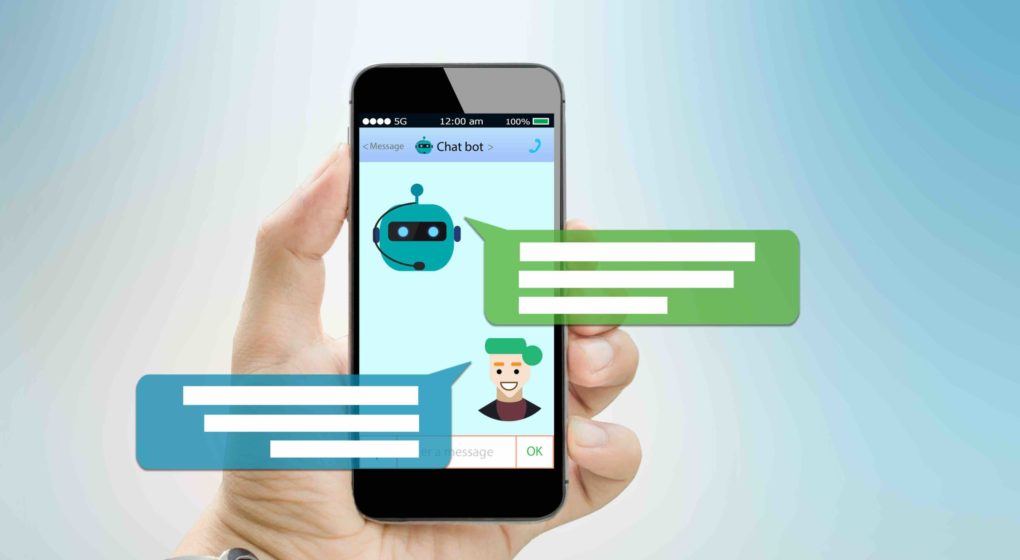
Each year marketers look for the latest solutions to help them solve their marketing challenges – from generating more leads to driving company revenue. In recent years, Conversational Marketing has gained a lot of buzz as user behaviors and preferences continue to shift. Historically, tools such as live chat and chatbots have been seen as solutions for service-focused teams. In recent years, however, many marketers are realizing that these tools can be effective for earlier in the customer journey, starting with prospects.
Enter conversational marketing – the strategy of moving buyers through your marketing and sales funnels with real-time conversations. If you shuddered at ‘real-time’, you’re not alone. The importance of speed puts many marketers on edge, especially when the expectation is a personalized conversation.
Chatbots allow marketers to scale to efficiently meet customer expectations while not overloading internal staff. Sound too good to be true? It’s not, but it is challenging. Nailing your first chatbot requires a shift to a customer-focused approach.
A Customer-focused Approach
Many businesses believe they already have a customer-focused approach, but to be completely frank – they don’t. The truth is many companies still put their own needs and vanity metrics above their customers’ needs. A customer-focused approach requires a shift from, “What do we want them to know?” to “What do they need to know?” When your content shifts from talking about yourself as a company to providing answers to what your customers want to know – your customers will get what they need.
Your customers don’t just need information, though. They need it on their own terms, in their own time, and tailored to their specific need. This means your marketing needs to take a timely, informative, and personalized approach, and a conversational marketing approach through chatbots enables marketers to achieve this.
So, you know you need to engage your customers through chatbots with a conversational approach – but how? Before you rush in and build a bot that turns your customers away, first sit down and ask yourself the following questions. Your responses to these questions will help you build an effective and enjoyable conversational experience.
5 Questions to Answer Before Building your First Chatbot
Planning is critical. You would never present at a large conference without a plan, so don’t build a chatbot without one. The first chatbot you build will not be perfect, and it will require a lot of planning, but that is because it is a new medium for a lot of marketers.
The following questions are key to answer before you jump to building and writing your conversational chatbot. Your responses will ultimately guide everything from messaging and objectives to where it appears and for how long. Let’s get started.
What are you looking to achieve?
Sure, we said you need to stop looking inward and start focusing on your customer – but this is still marketing. You need to start by defining your goals. Why are you considering conversational marketing to begin with? What are you hoping to achieve? And ultimately, how will you measure success?
Any time you set clear, measurable, time-bound goals before executing, you are more likely your actions will be successful. With your goal in mind, the rest should come easy!
Who are you engaging?
Based on your goals, define who you are targeting your chatbot to. Are you focused on generating more leads for a key service? Target your chatbot to anonymous visitors. Looking to convert existing leads to qualified, sales-ready prospects? Focus your chatbot on known or returning leads.
Once you have locked down who you are engaging, it’s important to understand the expected level of intent for that visitor. Intent will provide messaging and conversation strategies later on.
- Anonymous visitors – lowest level of intent and understanding
- Known or Returning leads – higher level of intent
- Qualified leads or target accounts – highest level of intent
- Customer – high level of intent and highest level of understanding (usually)
Some conversational marketing platforms will allow you to further tailor who your chatbot is displayed to, but for your first bot, it’s best to start simple and continue to personalize over time.
Where are they on your site?
With your audience in mind, jot down the locations they are most likely to visit on your site. If you are unsure, take a look at your Google Analytics data, or better – pull insights from behavioral data for existing contacts in your CRM.
Based on the content of the page, you can assume a lot about the needs of a visitor:
- Home page – billboard, high-level content indicates a prospect in their initial awareness and discovery
- Blog/Content pages – blog articles or content offers such as reports, white papers, etc. indicate a prospect at the start of their research, building a consideration set
- Educational pages – product or solution pages indicate a prospect later in their research and likely higher intent
- High Intent pages – pricing or get a quote, contact us, or case studies indicate a qualified, sales-ready prospect
We recommend debuting your chatbot on a handful of related pages to ensure you get enough conversations (volume) to learn from your audience to further tailor your conversation.
Why are they here?
Last, but certainly not least, is hypothesizing why your audience is chatting to begin with. Based on who they are and where they are on your site, you can likely make an educated guess as to what they are looking for. If not, chat with your sales or customer service team to gain insight around the most commonly asked questions or requests.
How should we engage them?
With the ‘why’ in mind, the final step to planning out your chatbot is to determine how to handle the hand-off. The hand-off is typically the final action or outcome of the conversation. If the prospect is looking to compare your service to your competitor, the hand-off action might be to first share a case study with them, demonstrating it with a real-world example. In this scenario, let’s say the prospect is from a target account – instead you might immediately hand the conversation off to the appropriate sales rep.
Common hand-offs are:
- Question – > Content, Downloadable, or Connect to Sales
- Education – > Content or Downloadable, and Enroll in a Lead Nurture Series
- Evaluation – > Schedule a meeting, or Connect to Sales
- Direction – > Navigation or Guide them to a Page
- Support – > Create a ticket or Offer a Help Article
The Takeaway
The key to building your first chatbot is understanding your audience and objectives. From there, the conversation will flow. A conversational marketing strategy will help you connect with your audience where and how they want to be engaged, and chatbots are the means to do this at scale.
About VONT Performance Digital Marketing
At VONT we believe that change is the only constant in the digital world – and that excites us. When tools and environments are constantly changing, new opportunities to help our clients achieve success are constantly arising. Each new advertising technology, social platform, or design approach allows us to improve on the results we achieve for our clients.
We believe in this idea of continual fine-tuning so much that we named our company VONT, which means to achieve exponential improvement in incremental steps. It is our core belief, and the reason why we are not simply a web design company or simply a digital advertising agency, but rather a long-term, single source partner providing a comprehensive array of web development and digital marketing capabilities.
In short, we’re here so that our clients achieve success in the ever-changing digital world.
If you’d like to learn more about VONT and the work we’ve done with our client partners, visit our Work page. Or, if you have a question, contact us. We’ll get right back to you!

![Building Search Engine Authority with a Content Hub [Mainely Tubs Case Study]](https://www.vontweb.com/wp-content/uploads/2021/03/internet-search-engine-1433323_1280-620x340.jpg)